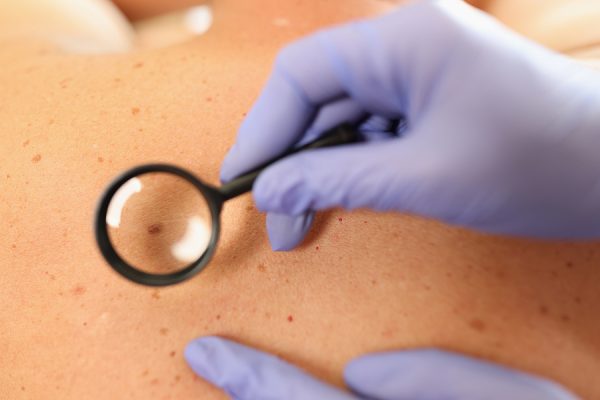We’ve been told over and over again that sunlight is our enemy; that if we want to prevent skin cancer, we should avoid it altogether.
On the other hand, we know that not getting enough sun exposure actually increases the chance of developing almost all types of cancer; including melanoma, which is the most serious type of skin cancer.
In fact, studies show that sun exposure prior to and after diagnosis of melanoma is actually associated a better outcome.
So here’s the problem. You avoid the sun because you don’t want to get skin cancer. But to prevent skin cancer, your body needs the vitamin D it produces when it is exposed to the sun. How’s that for a catch-22?
Plus, if you live north of Atlanta, it’s nearly impossible to maintain adequate levels of vitamin D year-round. And, in fact, the highest rates of melanoma in the U.S. are in the northern states where sun exposure is low.
Utah has the highest rate of new melanoma per capita. This is followed by Washington D.C., Vermont, Delaware, Minnesota and New Hampshire. These are all areas that are too far from the equator to get adequate sunlight for vitamin D production on a year-round basis.
Unfortunately, it’s nearly impossible to get enough vitamin D from the foods you eat. The only appreciable food source is salmon. So the best way to get more of it is through supplementation. And there is some great news on that front.
Vitamin D Lowers Melanoma Risk
A new study out of Finland finds that people who regularly take vitamin D supplements develop fewer cases of melanoma than those who don’t. The risk for melanoma was more than halved. Plus, they had considerably lower risk of other skin cancers.
In other research, involving patients with existing melanoma, higher vitamin D levels were associated with better survival rates.
This isn’t surprising. That’s because vitamin D has a direct effect on the expression of more than 200 genes. Many of those are related to cancer and are involved in the division, growth and death of cells.
So not only does it defend against skin cancer. It also protects against other, deadlier, forms of cancer. This includes colon cancer, ovarian cancer, prostate cancer, breast cancer and even non-Hodgkin’s lymphoma.
Vitamin D also affects genes related to autoimmune diseases, cardiovascular health and metabolic processes. Insufficient levels are associated with heart disease, diabetes, dementia and depression.
Even if you’re only moderately deficient, your odds of all of these age-related health problems will increase. So it’s extremely important to keep your vitamin D levels up to par.
How Much is Enough?
There are many things that affect your vitamin D status. Where you live, how much sun exposure you get, body mass index, skin pigmentation and age can all play a role.
One of the best things you can do for yourself is get tested for vitamin insufficiency. All you have to do is ask your doctor for a 25-hydroxy vitamin D test. Set your goal for maintaining levels of at least 50-65 ng/ml.
- If your levels are 30 ng/ml or lower, take at least 8,000 IU of vitamin D3 in the cholecalciferol form each day and retest in three months. (For best results, look for one that has a low dose of vitamin K2 and a bit of vitamin A too).
- If your levels are 31 to 40 ng/ml, supplement with 5,000 IU daily for three months. Then retest.
- If your numbers are over 40, you’re not deficient. Still, it’s a good idea to take 2,000-4,000 IU daily to maintain sufficient levels.
The test is easy, insurance typically pays for it, and vitamin D supplements themselves are inexpensive. So there’s no reason not to get tested.
Sources:
Rosso S, Sera F, Segnan N, Zanetti R. Sun exposure prior to diagnosis is associated with improved survival in melanoma patients: results from a long-term follow-up study of Italian patients. Eur J Cancer. 2008 Jun;44(9):1275-81.
Berwick M, Armstrong BK, Ben-Porat L, Fine J, Kricker A, Eberle C, Barnhill R. Sun exposure and mortality from melanoma. J Natl Cancer Inst. 2005 Feb 2;97(3):195-9.
Moreno-Arrones OM, Zegeer J, Gerbo M, Manrique-Silva E, Requena C, Traves V, Nagore E. Decreased vitamin D serum levels at melanoma diagnosis are associated with tumor ulceration and high tumor mitotic rate. Melanoma Res. 2019 Dec;29(6):664-667.
Islami F, Sauer AG, Miller KD, Fedewa SA, Minihan AK, Geller AC, Lichtenfeld JL, Jemal A. Cutaneous melanomas attributable to ultraviolet radiation exposure by state. Int J Cancer. 2020 Sep 1;147(5):1385-1390.
Kanasuo E, Siiskonen H, Haimakainen S, Komulainen J, Harvima IT. Regular use of vitamin D supplement is associated with fewer melanoma cases compared to non-use: a cross-sectional study in 498 adult subjects at risk of skin cancers. Melanoma Research. 2022. Epub ahead of Print.
Gracia-Darder I, Carrera C, Alamon-Reig F, Puig S, Malvehy J, Podlipnik S. Vitamin D deficiency in melanoma patients is associated with worse overall survival: a retrospective cohort study. Melanoma Res. 2022 Oct 1;32(5):384-387.
Hossein-nezhad A, Spira A, Holick MF. Influence of vitamin D status and vitamin D3 supplementation on genome wide expression of white blood cells: a randomized double-blind clinical trial. PLoS One. 2013;8(3):e58725.
Zmijewski MA. Vitamin D and Human Health. Int J Mol Sci. 2019 Jan 3;20(1):145.
Sizar O, Khare S, Goyal A, et al. Vitamin D Deficiency. [Updated 2022 Jul 27]. In: StatPearls [Internet]. Treasure Island (FL): StatPearls Publishing; 2022. Tsiaras WG, Weinstock MA. Factors influencing vitamin D status. Acta Derm Venereol. 2011 Mar;91(2):115-24.


